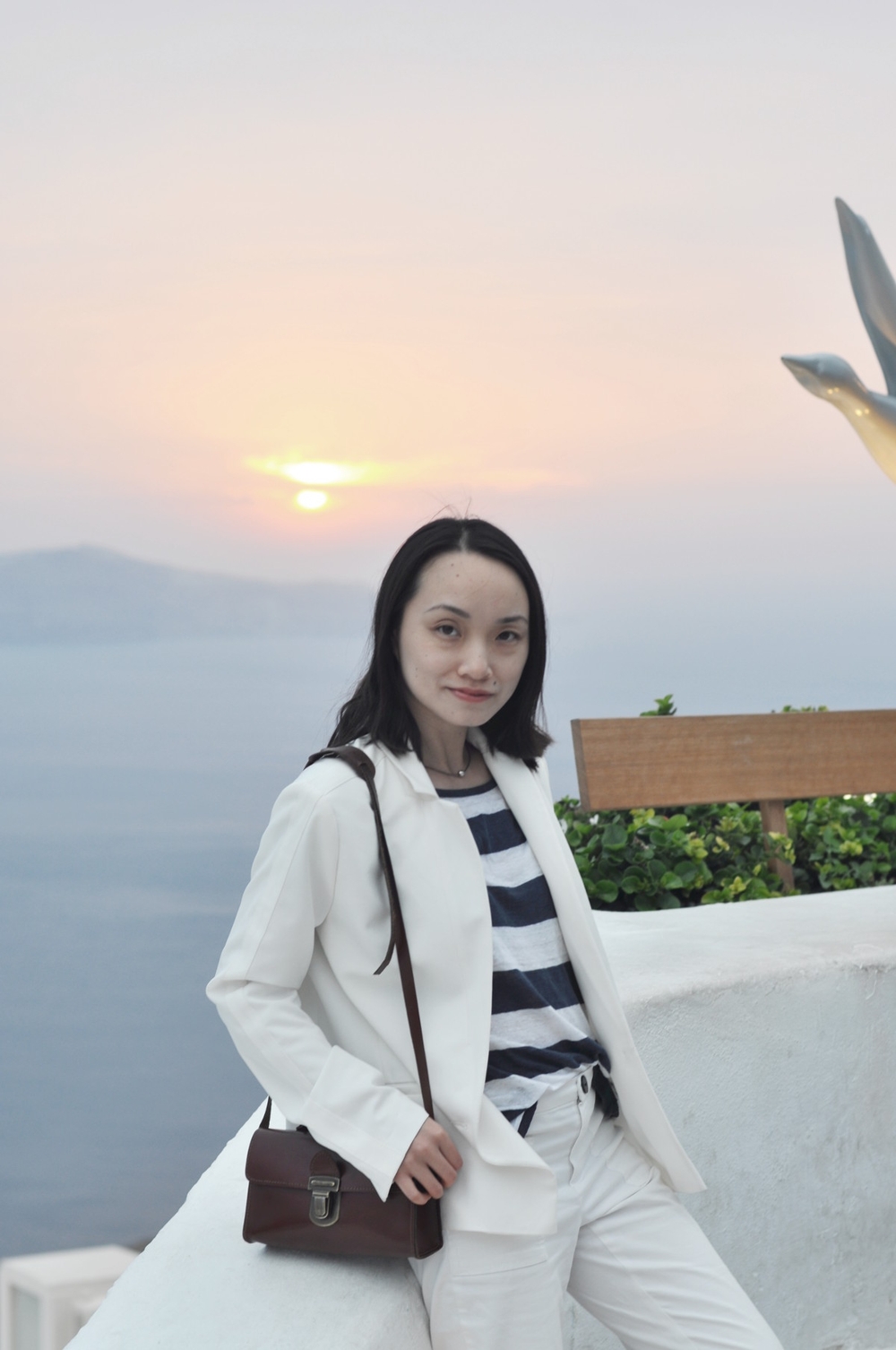Santorini – Red Beach And Akrotiri
June 21st, 2018 | 2 minutes to read
Akrotiri is an area that has two major attractions people normally go to. One is the Akrotiri Ruin Museum, the other is the red beach.
The bus from Fira can drive you all the way down to the beach. It is peacefully lined up with black pebbles, rocks and some restaurants and bars. However, you need to walk a little along the sea to finally get to the bay area where the red beach is.
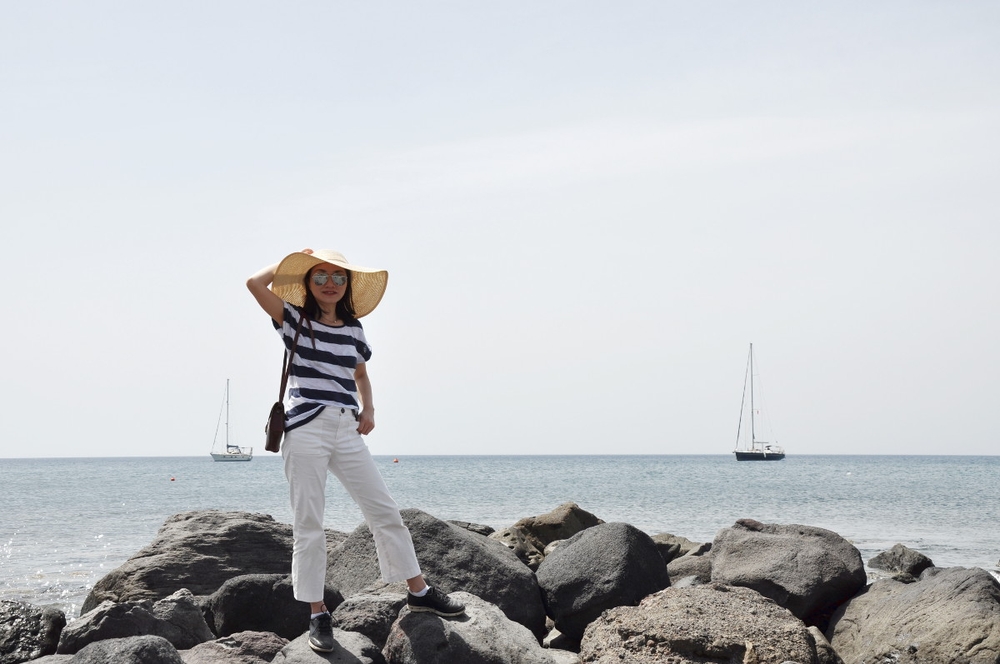
For easy walking I would suggest that you wear sneakers and take the flip flops when you are just ready to take the dip. The big cliff is reddish brown, very steep, enclosing the blue sea, a surely wild and wonderful creation by the volcano. Along the bank you can also see rocks sticking out from clear sea, and appreciate various shades of red, blue, and green of the sceneries. Like other popular beaches, here you can rent some beach chairs and umbrellas, and lie quietly under the sun or swim around a bit. However, the location is somehow a little isolated and not easy to reach (not without some walking and climbing on rocky roads), it's generally quieter. No noisy water activities.
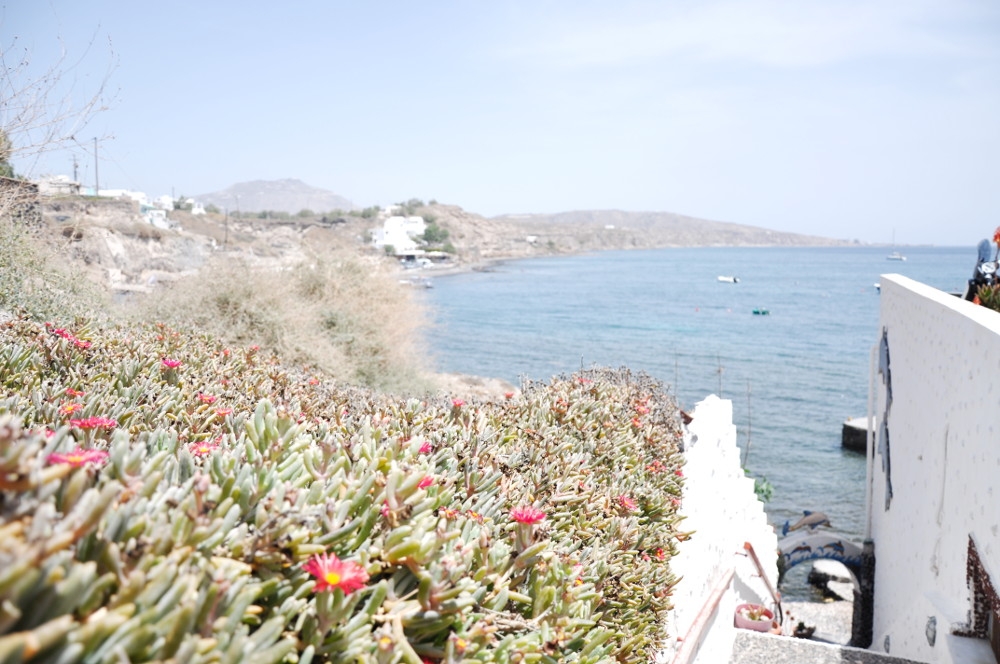
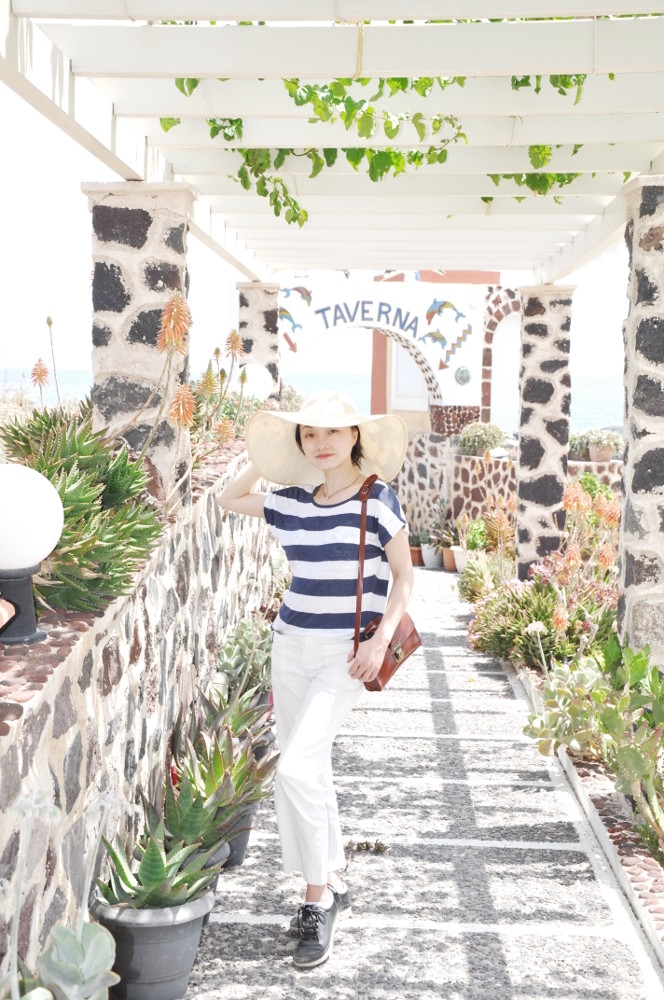

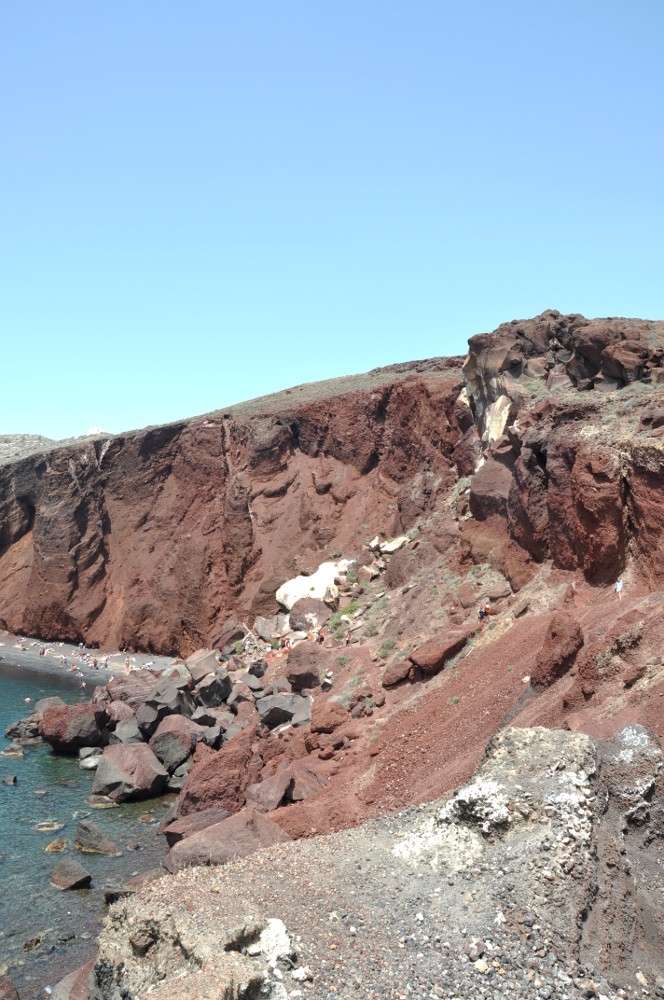
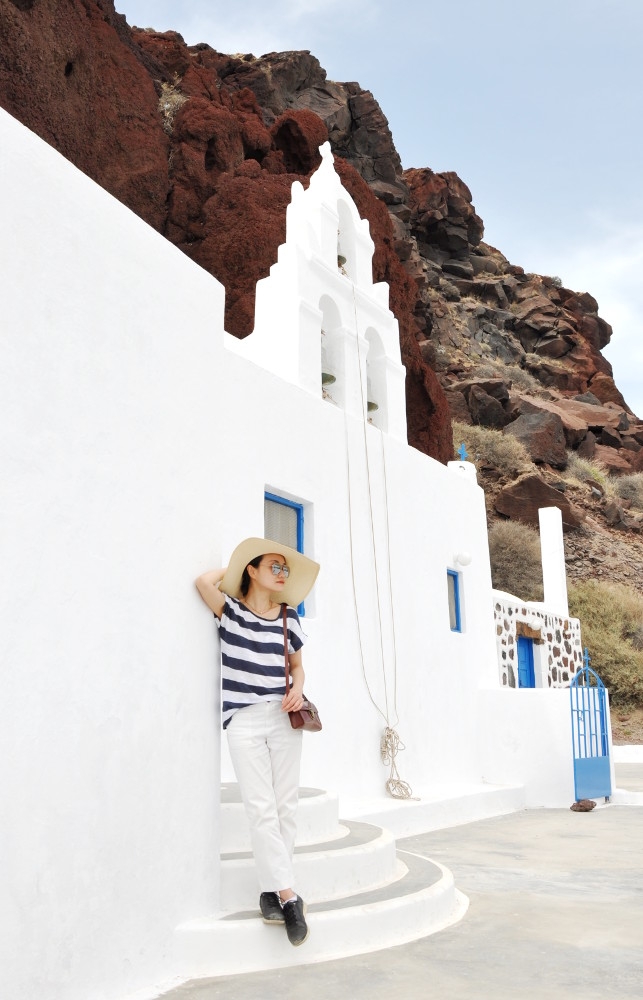
After the beach we went to the Akrotiri Museum, which is an excavation site of a Minoan Bronze Age settlement, associated with the Minoan civilization due to the close similarities in artifact and fresco styles. Some historian suspected that this provided the inspiration for Plato’s Atlantis, but we could never know for sure.
The history and description of the little city, once buried deeply, is well documented in the museum, and you can walk around above the ruin of the city on those walkways or stairs, trying to guess what it looked like in the past glory, from broken walls and piles of stones. There are traces of a square, apartments with two stories, large windows, street lanes and stairs. I also particularly like the part where we can actually go down and walk through the tiny town ourselves.
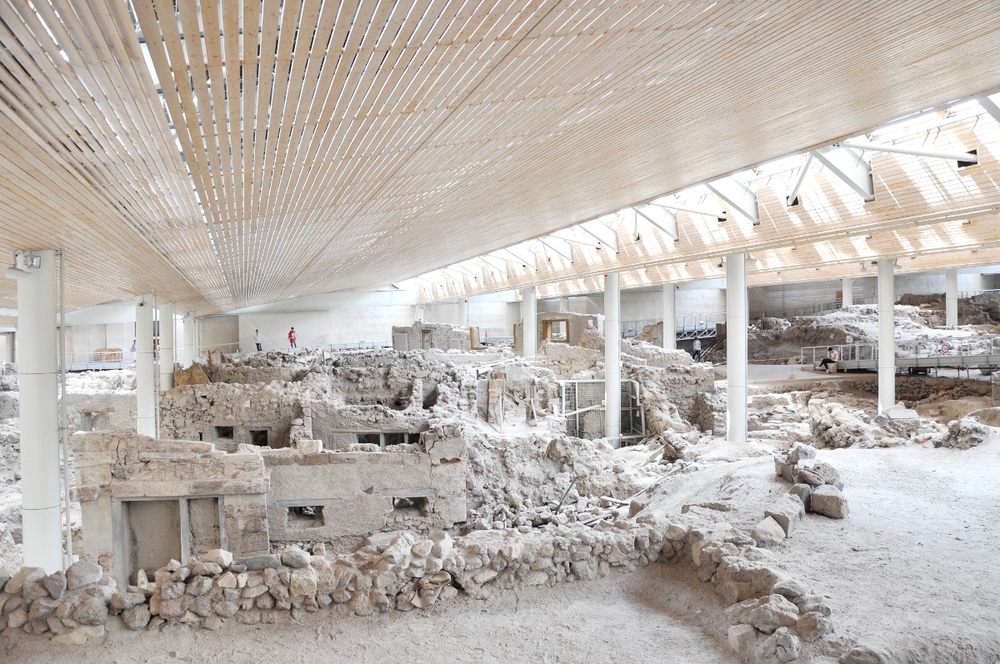
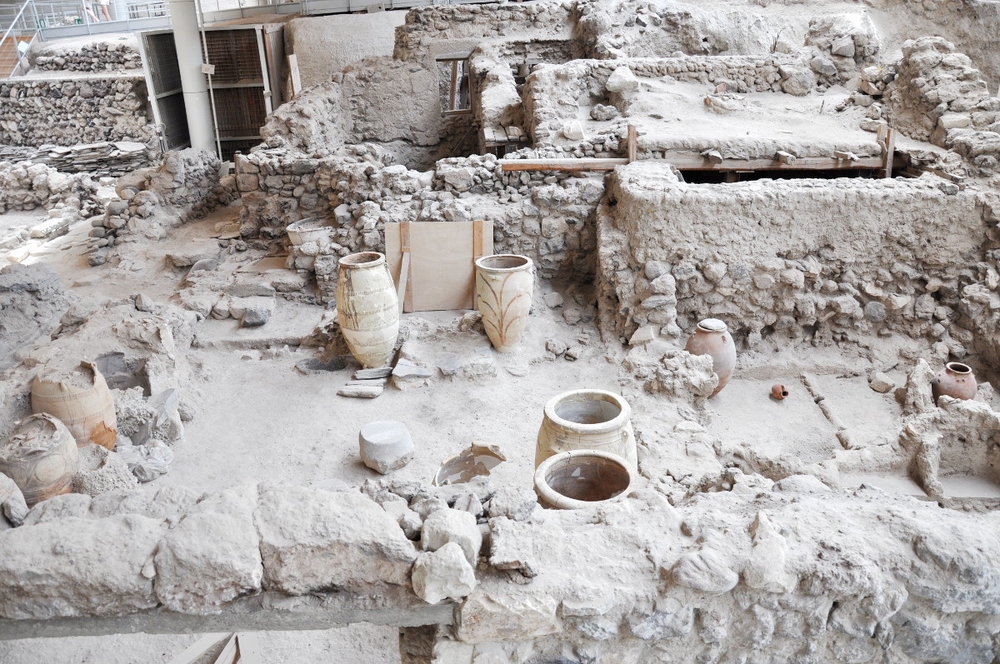
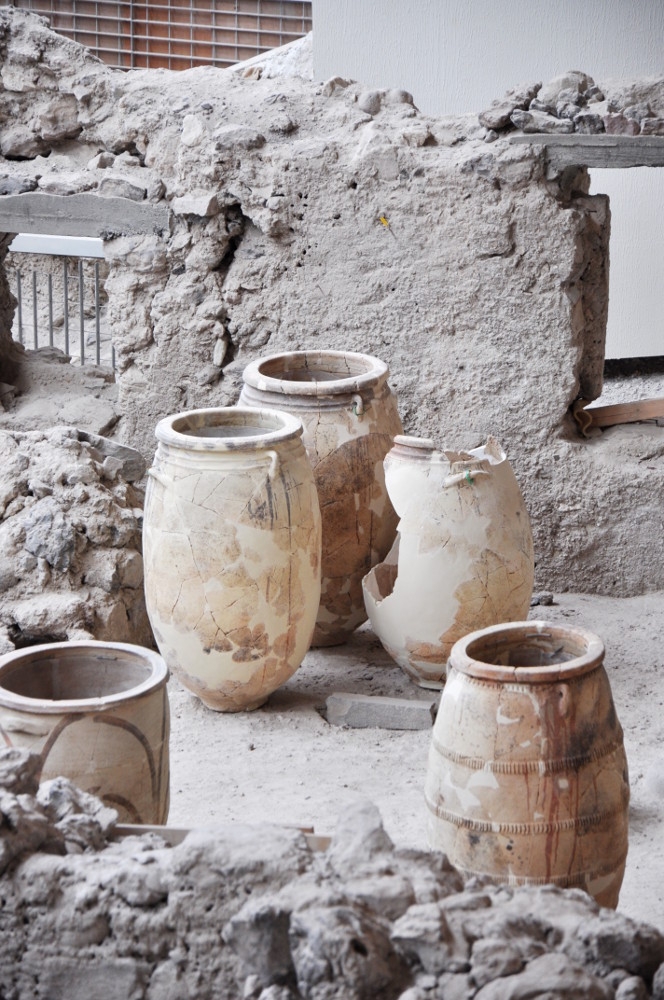
Of course, the most precious stuff, such as the frescoes, bathtubs, jars, a few jeweleries, were all carefully transferred to the Prehistoric Museum in Fira, which I do recommend that you visit after this ruin. Then you can get a grip of life back then. Don’t miss the frescoes of the youth with fish (this painting is quite famous and you might have seen the replica somewhere before you see the real thing), the young lady, and the avant-garde blue monkeys. Only a single golden object was found, and very few precious jewelries remained, which might have indicated that people evacuated carefully taking their expensive belongings with them and not many actually died in the eruption that destroyed their home. Some might compare Akrotiri to Pompeii in Italy, but it wasn’t that tragic at site as you don’t see curling human bodies at all.
